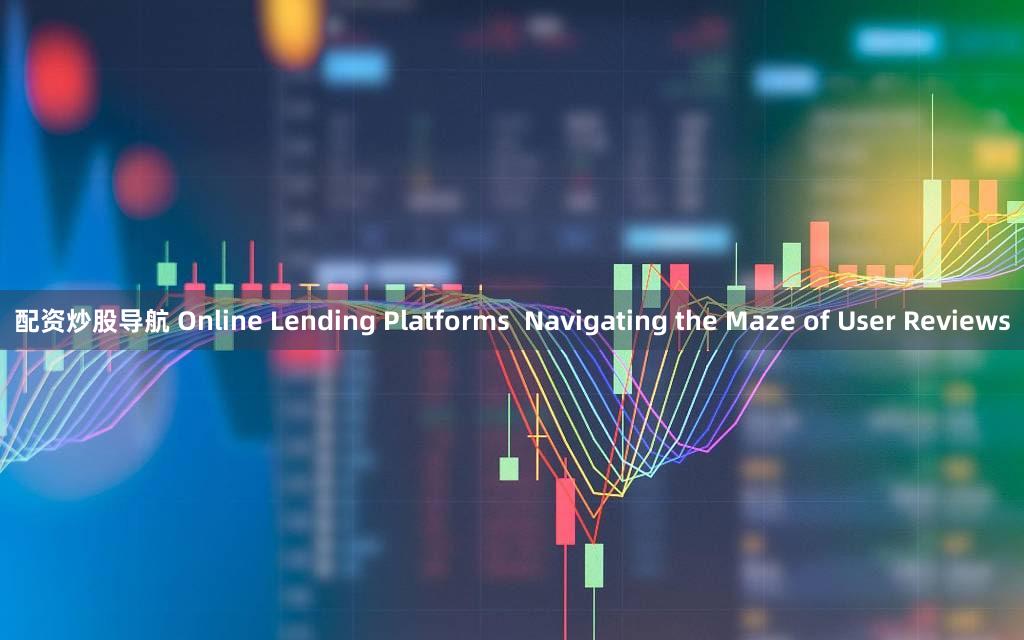
Online Lending Platforms: Navigating the Maze of User Reviews
Meta Description: Are online lending platform user reviews trustworthy? This in-depth guide explores the reliability of online testimonials, offering expert insights and practical advice for borrowers seeking financing.
Is that a million-dollar question or what?! Navigating the world of online lending can feel like traversing a minefield blindfolded. You're desperate for capital, maybe for a business expansion, a much-needed home renovation, or even just consolidating high-interest debt. You stumble upon dazzling websites promising quick approvals and flexible terms, plastered with glowing five-star reviews. But are these testimonials the real deal, or just slick marketing ploys designed to lure you in? The truth, my friends, is often somewhere in between. This isn't about scaring you away from online lending – it’s about empowering you with the knowledge to make informed decisions. I’ve spent years immersed in the financial technology (FinTech) sector, witnessing firsthand the triumphs and tribulations of both lenders and borrowers. I’ve seen the ecstatic celebrations after securing a much-needed loan, and the heartbreaking despair when a deal sours. I’ve analyzed mountains of data, dissected countless contracts, and spoken to hundreds of individuals on both sides of the lending equation. Based on this hard-won experience, I can tell you this: while user reviews on online lending platforms can offer valuable insights, they should never be taken at face value. This article will delve deep into the nuances of online reviews, exploring their strengths and weaknesses, and providing you with a framework to assess their credibility. We’ll uncover the subtle signs of manipulation, discuss the importance of diverse perspectives, and equip you with the tools to protect yourself from potentially misleading information. Get ready to become a savvy online borrower!
User Reviews on Online Lending Portals: A Critical Analysis
Let's be upfront: Completely dismissing all online reviews is foolish. They can provide a valuable snapshot of a lender's customer service, the speed of their processes, and the overall borrower experience. However, the sheer volume of fake reviews and the potential for manipulation necessitate a critical approach.
Spotting the Red Flags: Think of it like this: If every review on a platform is a glowing 5-star rave, your spidey sense should be tingling. Legitimate experiences are diverse. Look for common themes, but don't be swayed by an overwhelming tide of identical positive reviews. Here are some key red flags:
- Generic language: Are the reviews filled with vague praise ("Amazing service!" "Great experience!") without specific details? This is a telltale sign of a fake review.
- Similar writing styles: Do multiple reviews seem written by the same person? Pay attention to sentence structure, vocabulary, and overall tone.
- Suspicious timing: A sudden surge of positive reviews after negative press or regulatory scrutiny is highly suspicious.
- Lack of negative reviews: No company is perfect. A complete absence of negative reviews should raise immediate concern.
- Unrealistic promises: Be wary of reviews boasting impossibly quick approvals or unrealistically low interest rates.
Beyond the Stars: What to Look For
Instead of focusing solely on the star rating, delve deeper. Look for:
- Specific details: Credible reviews provide specific examples, dates, and interactions with the lender's staff.
- Detailed descriptions: Authentic reviews describe the entire borrowing process, including application, approval, and repayment.
- Diverse perspectives: A mix of positive and negative reviews, with varying levels of detail, suggests authenticity.
- Verified users: Some platforms verify user identities to enhance review reliability. Prefer these platforms.
- External validation: Check for reviews on independent sites like Trustpilot or Yelp. These sites often have more stringent verification processes.
The Power of Triangulation:
Don't rely on platform reviews alone. Employ a strategy of "triangulation," corroborating information from multiple sources:
- Independent financial websites: Check reviews and ratings on reputable financial websites.
- Industry reports: Look for reports from financial regulatory bodies or consumer protection agencies.
- Social media: Search for the lender's name on social media platforms to see what users are saying.
- Personal contacts: Ask your friends, family, or colleagues if they have experience with the lender.
A Case Study: Analyzing a Hypothetical Review
Let's analyze a hypothetical review: "This platform was AMAZING! I got my loan in 24 hours, the interest rate was incredibly low, and the customer service was top-notch. Highly recommend!"
While seemingly positive, this review lacks specifics. What type of loan was it? What was the exact interest rate? What specific aspect of the customer service was "top-notch"? The vagueness raises doubts about its authenticity.
The Human Element: Understanding Bias and Perspective
财盛证券Remember, even genuine reviews are subjective. A borrower's experience can be influenced by various factors, including their financial situation, credit score, and personal expectations. A negative review doesn't necessarily mean the lender is bad; it might simply reflect a mismatch between the borrower's needs and the lender's offerings.
Consider the following scenarios:
- Borrower A has excellent credit and easily secures a loan with favorable terms. Their review will likely be positive.
- Borrower B has poor credit and faces higher interest rates and stricter requirements. Their review might be more negative, even if the lender acted fairly.
Transparency and Disclosure: The Lender's Role
Reputable online lending platforms should be transparent about their review processes. They should clearly state whether they verify user identities, allow negative reviews, and how they handle potentially fraudulent reviews. Look for platforms that embrace transparency and openly address concerns.
Protecting Yourself: A Practical Guide
Here's a step-by-step guide to help you navigate online lending reviews:
- Diversify your research: Don't rely solely on platform reviews.
- Look beyond star ratings: Focus on the details within the reviews.
- Identify red flags: Be wary of generic language, similar writing styles, and a complete absence of negative reviews.
- Cross-reference information: Use multiple sources to verify information.
- Read between the lines: Consider the reviewer's perspective and potential biases.
- Contact the lender directly: If you have specific questions, contact the lender and ask for clarification.
Frequently Asked Questions (FAQs)
Q1: Are all negative reviews automatically true?
A1: No. Negative reviews can be genuine reflections of bad experiences, but they can also be biased, unfair, or even retaliatory. Always consider the context and look for patterns.
Q2: How can I tell if a review is fake?
A2: Look for generic language, similar writing styles, suspicious timing, and unrealistic promises. A complete absence of negative reviews is also a significant red flag.
Q3: What's the best way to verify a lender's legitimacy?
A3: Check their registration with relevant regulatory bodies, look for independent reviews on reputable websites, and search for news articles or press releases.
Q4: Should I avoid lenders with many negative reviews?
A4: Not necessarily. A few negative reviews are normal. However, a disproportionate number of negative reviews or patterns of consistent complaints should raise serious concerns.
Q5: What information should I look for in a positive review?
A5: Look for specific details about the loan process, interest rates, customer service interactions, and overall experience.
Q6: Can I trust reviews on the lender's own website?
A6: Reviews on a lender's website should be viewed with skepticism. Ideally, cross-reference them with reviews from independent sources for a more balanced perspective.
Conclusion: Informed Decisions, Secured Future
Navigating the world of online lending requires vigilance and a critical eye. While user reviews can be a helpful tool, they should never be the sole basis for your decision. By employing the strategies outlined in this article, you can significantly improve your ability to evaluate reviews, identify potential red flags, and ultimately, make informed decisions that protect your financial future. Remember, your financial well-being is paramount – don't let misleading reviews lead you astray. Do your homework, ask questions, and choose wisely!
文章为作者独立观点,不代表财盛证券观点






